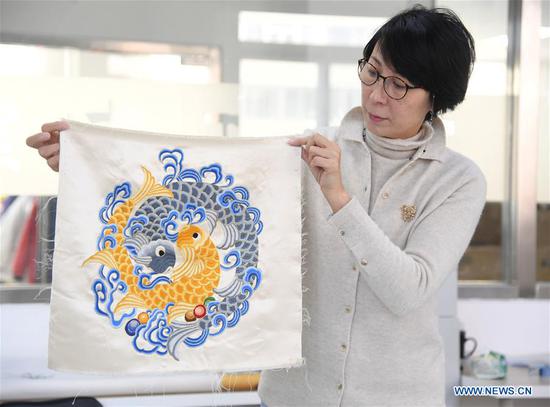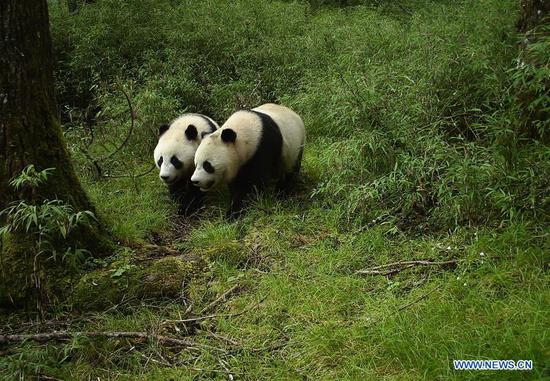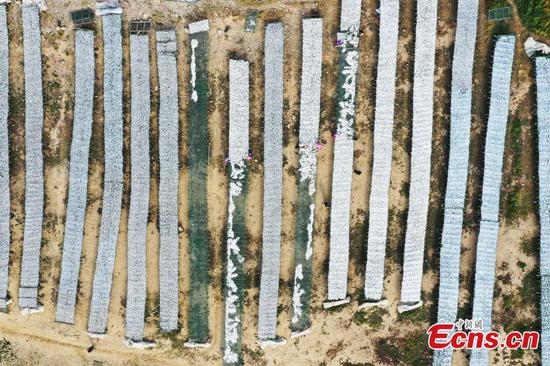Chinese and U.S. scientists found that a portion of the genome that does not transcribe proteins plays a significant role to make domesticated rice different from wild rice species.
The study published on Wednesday in the journal Science Advances showed that key changes that occurred during rice domestication more than 9,000 years ago could be tied back to molecules called long-noncoding RNAs (lncRNAs), a class of RNA molecules with a length of more than 200 nucleotides.
Domesticated rice has fatter seed grains with higher starch content than its wild relatives, but scientists have previously documented only a few of the genetic changes that made rice into a staple food.
A large proportion of the DNA in the chromosomes comprises genes that do not encode instructions for making proteins. Some scientists called the poorly understood stuff the "dark matter" of the genome, which may play an outsized role in rice development.
Researchers from the Institute of Crop Sciences at the Chinese Academy of Agricultural Sciences and Washington University in St. Louis used sensitive detection techniques to quantify and track lncRNA transcription in rice.
They found that about 36 percent of the genetic information recorded in the rice genome can be traced back to noncoding regions, but more than 50 percent of the diversity of traits important to agriculture is linked to those same areas.
"For the first time, the lncRNAs in noncoding region of cultivated rice and wild rice was deeply annotated and described," said the paper's first author Zheng Xiaoming, a biologist with the Institute of Crop Sciences.
The selection on lncRNAs contributed to changes in domesticated rice grain quality by altering the expression of genes that function in starch synthesis and grain pigmentation, according to Zheng.
The study could open new doors for producing new crops and grains through precision breeding, according to the researchers.


















































